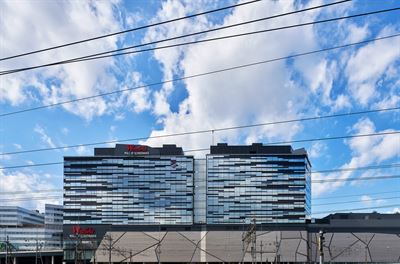“In a pleasant sound environment, we can listen without making an effort,” says Ingemar Holmberg, audiology technician at SPSM. “We then also remember more. When it’s noisy, our brains have to work overtime on just working out what is being said, which makes things difficult to remember.”
To create a good sound environment at work, you need to remove annoying noise and reinforce sounds that we really need to hear. This may concern, for example, removing troublesome traffic noise and making it easier to hear what your colleague is saying when they are giving a presentation at a meeting.
Wall and ceiling absorbers achieve positive effects
Sound absorbers efficiently remove unwanted noise. Wall absorbers remove flutter echo, which occurs when sound bounces between two walls. Ceiling absorbers can reduce rumbling bass frequencies. An advanced method of making it easier to correctly hear speech is by using what are known as sound diffusion panels. These can look like wavy wooden boards and they reinforce consonant sounds in language.
“Even as early as the project planning stage, requirements should be set for as little noise on the premises as possible,” says Sten Andersson, construction project manager at SPSM. “For example, you can make sure that ventilation equipment and projectors are low-noise. The interior also plays its part – fitting chairs with rockers or feet makes a difference. Curtains also have a certain sound-absorbent effect.”
Challenges in open-plan offices
One challenge of the open-plan office is that there are no walls on which to put sound absorbers. Adhering to the Swedish standard’s highest noise class, class A, which means that no sound may exceed 26 decibels, is impossible according to Ingemar.
“People perceive noise disturbance in extremely different ways,” he says. “You can’t ‘shut down’ hearing, and it’s easy to overhear conversations even if you don’t want to. That’s why it’s important that in open-plan offices, there are what are known as quiet rooms, telephone rooms and meeting rooms that are sound-absorbent.”



